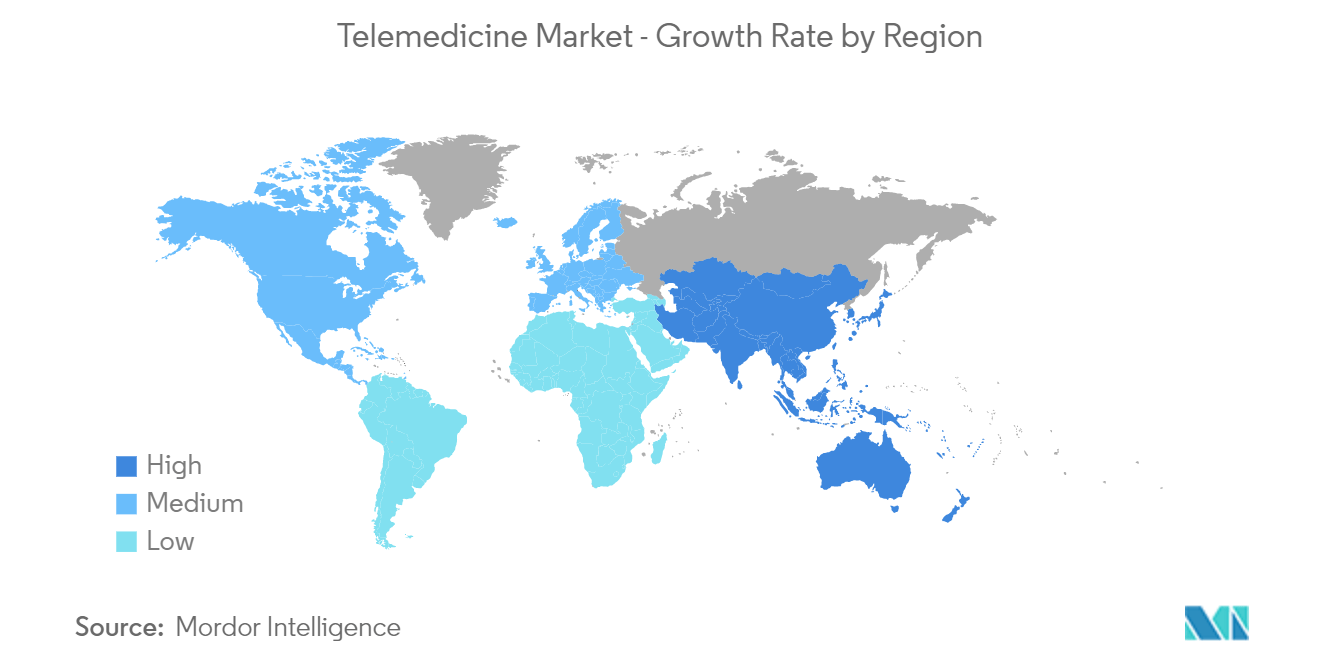Market Trends of Telemedicine Industry
Tele homes Segment is Expected to Witness a Significant Growth Over the Forecast Period
Tele homes involve delivering healthcare services to clients in their own homes. The rise of chronic diseases is a global concern that strains healthcare resources. Tele home services include innovative ways to provide care, monitor a patient, and provide information using the latest technology. Monitoring allows early identification of diseases and provides aid in emergencies. Hence, the use of tele home services is increasing. For instance, according to an article published by JMIR Publications, in January 2022, children and their families chose pediatric tele home care since it is 9% less expensive than traditional hospital care, freeing up hospital beds for more complicated situations in Spain.
Further, people prefer tele home at home rather than visiting a hospital for treatment owing to greater convenience and reduction in overall cost. For instance, according to an article published by the Partnership for Quality Home Healthcare, in 2021, some 86% of adults preferred to receive "post-hospital, short-term healthcare" at home, while only 5% preferred nursing homes in the United States. Tele home services provide an opportunity for significant savings for patients and hospitals. Thus, the increasing adoption rate of tele homes services is directly affecting the telehealth market growth. Therefore, factors such increase adoption rate and low cost of tele home are expected to drive segmental growth in the telemedicine market during the forecast period.

North America is Expected to Dominate the Telemedicine Market Over the Forecast Period
Telemedicine market share is a rapidly growing in the United States’ healthcare sector due to the growing burden of chronic diseases and the high adoption of advanced healthcare technologies. The adoption of telemedicine has improved care management, patients' quality of life, and reduced healthcare spending. Furthermore, the rising demand for mobile technologies, rising home care adoption by patients, increased healthcare expenditure, and reduction in hospital visits are expected to propel the telemedicine market size over the forecast period. For instance, according to the 2021 report from the Canadian Institute of Health Information, Canadian health expenditure increased to USD 308.1 billion in 2021 compared to USD 301.5 billion in 2020. Similarly, as per the 2022 report of the Centers for Medicare and Medicaid Services (CMS), the health expenditure of the United States was about USD 4.3 trillion, an increase of about USD 173 billion from the previous year. Thus, the increasing healthcare spending is anticipated to create opportunities for telehealth, thereby propelling the market growth.
Additionally, the largest telehealth companies are engaged in partnerships, collaborations, acquisitions, mergers, and product launches to innovate in the telemedicine market, driving growth in the forecast period. For instance, in April 2021, Inova Health System in the Northern Virginia and Washington DC area, United States, offered an FDA-approved telemedicine option for remote neuromodulation of deep brain stimulation (DBS) patients being treated for Parkinson's disease and essential tremor. Also, in August 2022, Hicuity Health launched tele-ICU services at MUSC Health Columbia Medical Center Downtown in Columbia, South Carolina. Therefore, such development is expected to drive the telemedicine market. Thus, given the factors above, the telemedicine market is expected to grow significantly in North America over the forecast period.


